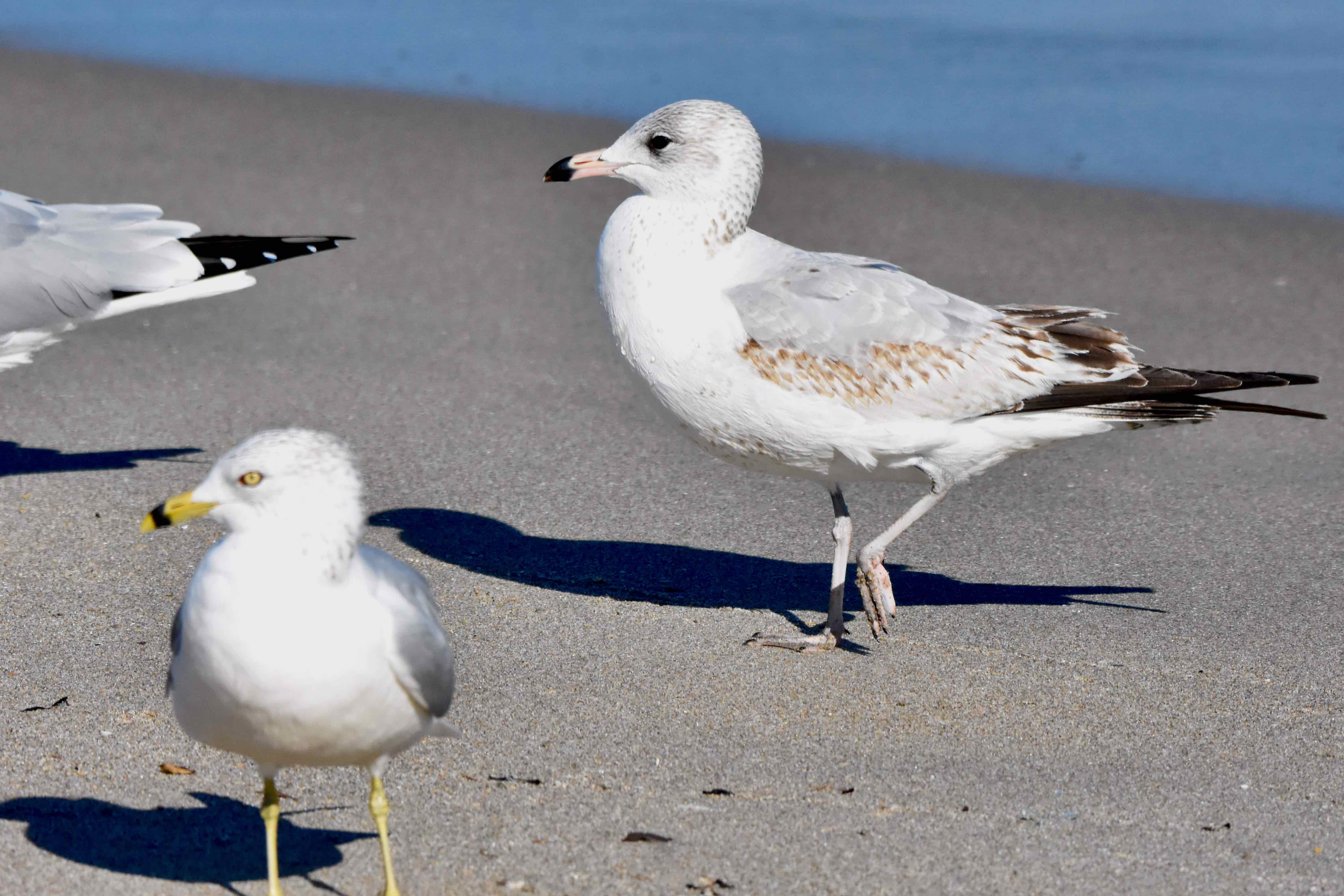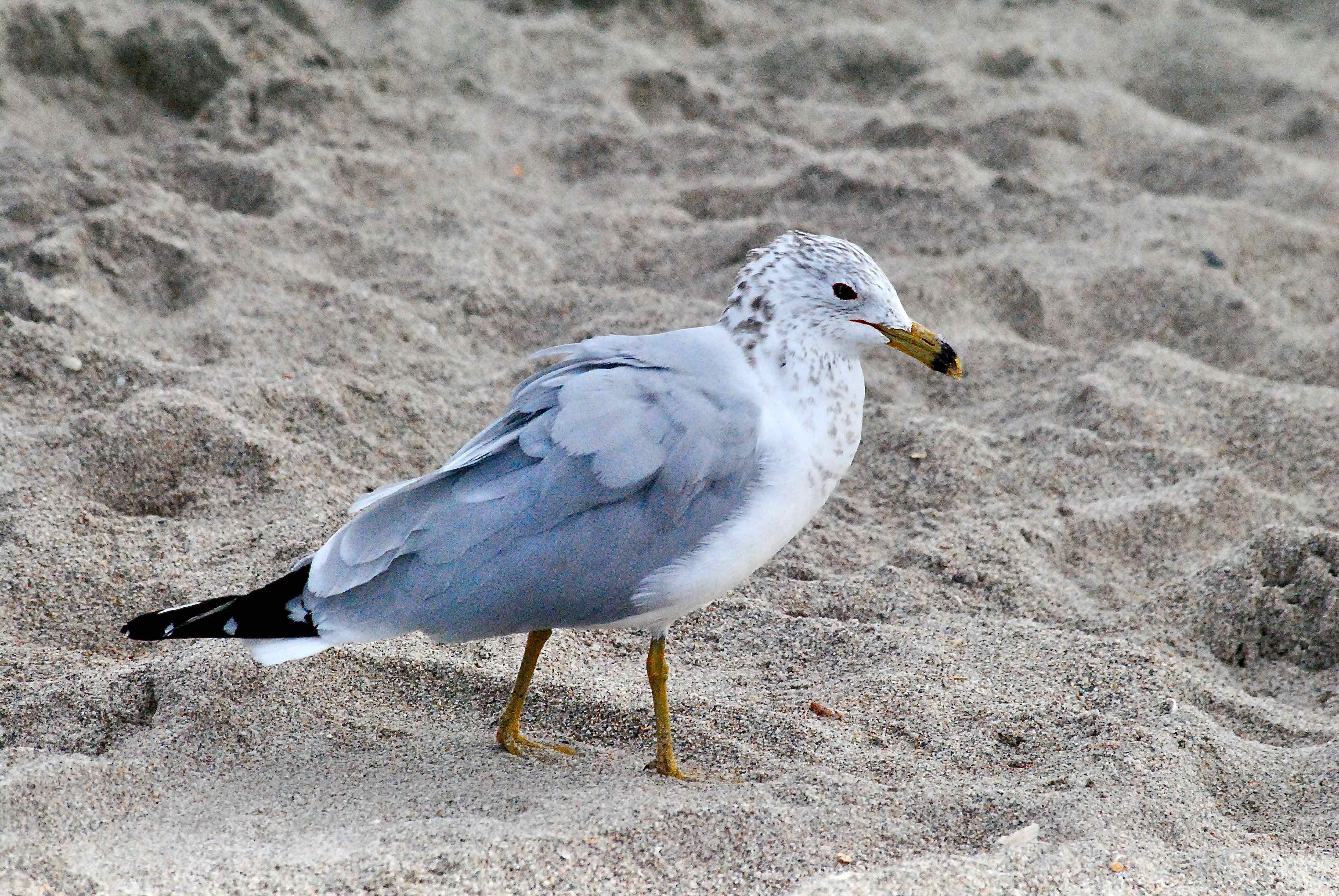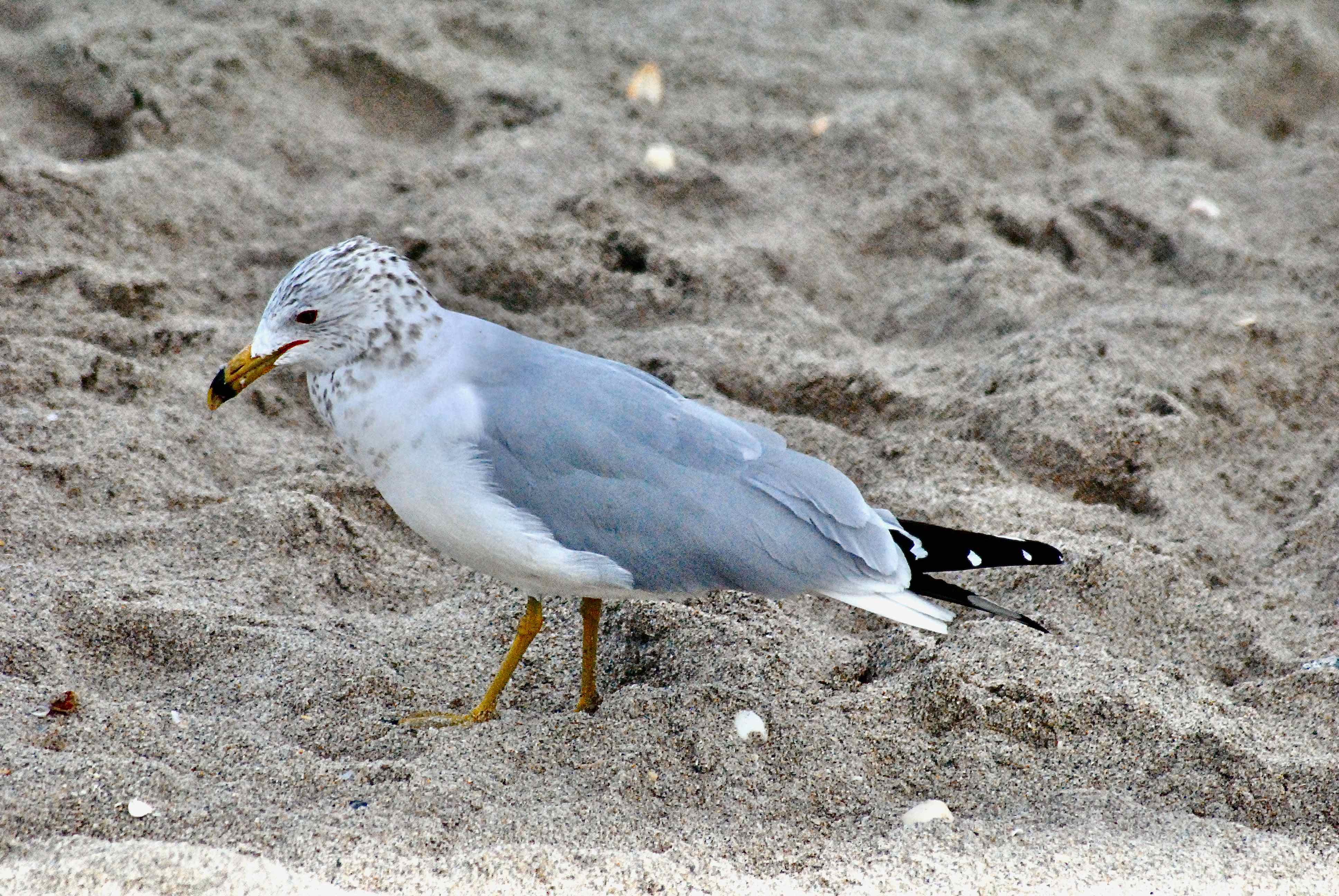
Ring-billed gull, photographed at Spanish River Park, Boca Raton, Palm Beach County, in December 2017.
East coast, west coast, north, south and many points in between. The ring-billed gull, Larus delawarensis, is everywhere. Almost everywhere.
Ring-billed gulls are one of the most common and widespread gulls in North America. Stroll a Florida beach in winter and there's a fair chance, you'll encounter this gray and white bird.
In summer, ring-billed gulls have a white head and body with a gray back and wings that are black-tipped with white spots and a red ring around each eye. The bill is on the short short side for a gull and has a black ring near the tip. In winter, the white head becomes slightly streaked with browns and grays; the red eye ring disappears.
First-year ring-billed gulls are mottled brown with pink legs, similar to herring gulls. Adult ring-billeds are also similar to herring gulls, but herring gulls lack the black ring, instead sporting a conspicuous red spot near the tip of the lower bill. Herring gulls are also bigger. Ring-billed gulls are about a foot-and-a-half to two feet long, with wingspan under four feet.
Like a few gulls, ring-billeds go through a multi-year transformation from hatchling into full adult plumage. In the case of ring-billeds, it's three years, and the changes can be subtle. Study the two gulls in the bottom left photograph; note particularly the eyes, the bill and the legs. The one farther from the camera is a first-year gull, with its dark eyes and bill black to the tip; the one closer, with its yellow eyes and the ring slightly receded from the bill tip, is more mature. The legs on the first-year are pink, as noted above, versus the yellow legs of the more mature bird.
The range of the ring-billed spans a good chunk of North America. In summer, they breed along the northern tier of the United States and much of provincial Canada. In winter, they retreat to both coasts and rivers and lakes of south-central United States, into Mexico and the Caribbean. During fall and spring migrations, the birds can be spotted almost anywhere in between.
Their natural habitats are mostly around water — beaches, mudflats, rivers and lakes — but they'll congregate at garbage dumps looking for food. They'll be spotted in cities and the 'burbs, in parking lots and farms. They're more likely to be found inland than most other gulls, taking to freshwater as much as they do saltwater. Watch a ballgame in some cities and you might spot ring-billed gulls flying about.
Their diets are broad — fish, bugs, rodents, garbage and to a lesser extent fruits and grains. According to the Cornell Laboratory of Ornithology, some ring-billed gulls out west feed entirely from farmers' fields. They forage while flying, while walking, while swimming. Garbage dumps also are a major food source for ring-billed gulls.
Ring-billed gulls breed in the northern tier of the U.S. and much of Canada. They nest on the ground in open areas near water. Both partners build the nest, using grass, twigs and other vegetation. Clutches are typically two to four eggs, which require three to four weeks of incubation before hatching. Both males and females share sitting duties. Both also feed the very young — hatchlings are capable of wandering in a day or two and capable of feeding themselves in five to 10 days. They fledge at five weeks. There are also rare "super clutches," with more than four eggs. They occur when two females bond and mate with a single male.
Ring-billed gulls are members of Laridae, the gull and tern family.
Spanish River Park



